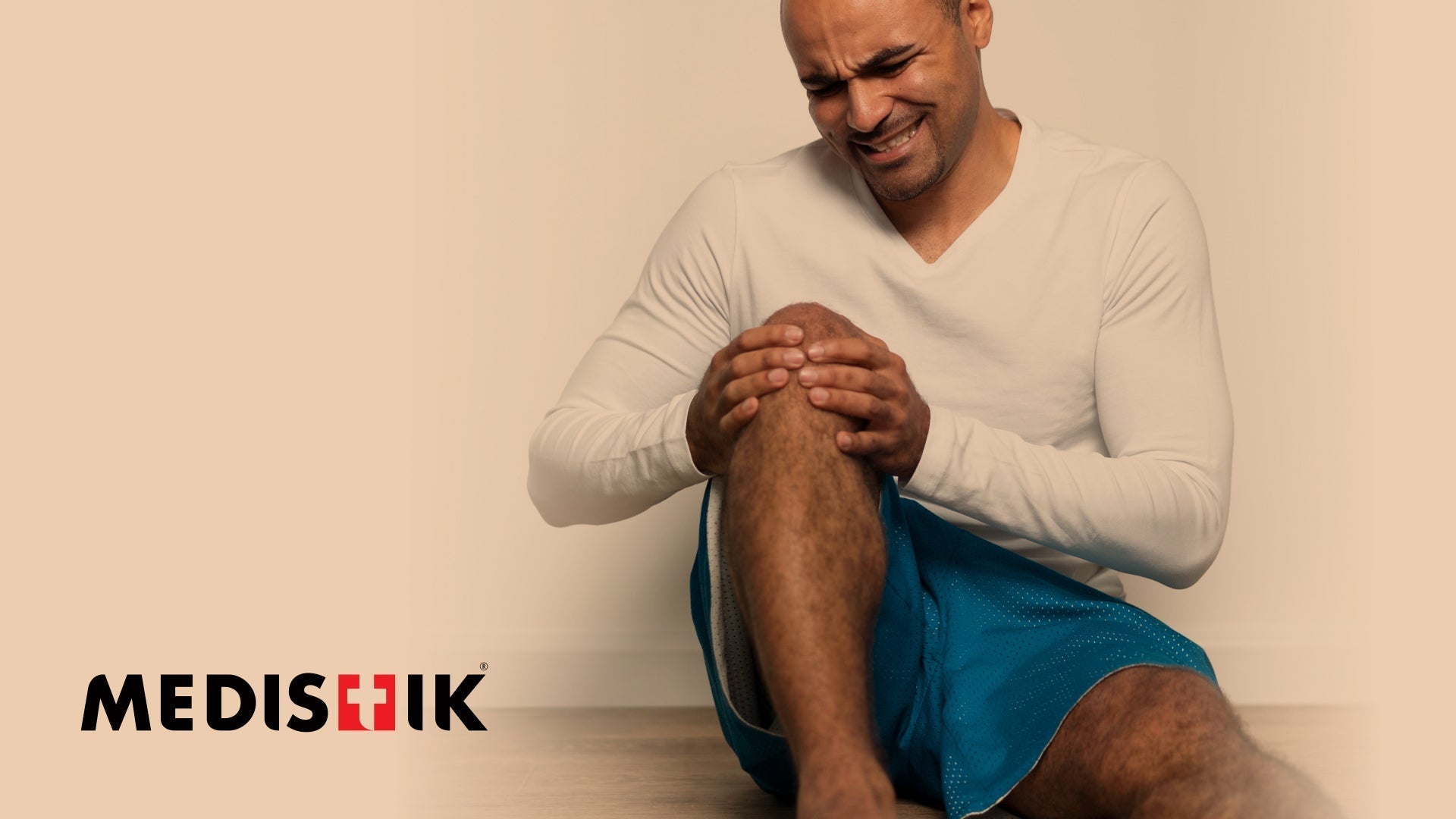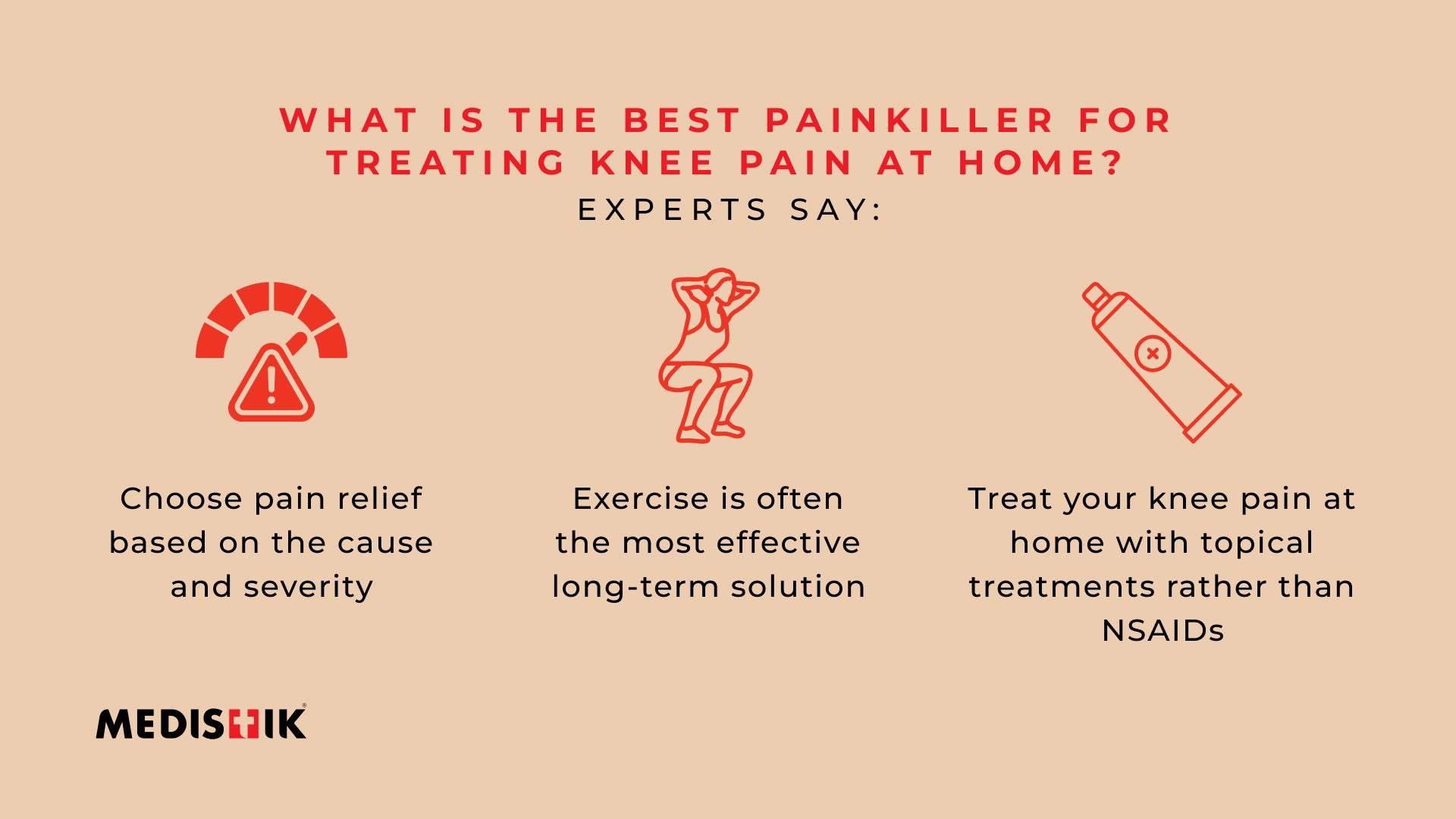What is the Best Painkiller for Knee Pain?: Ask The Experts

TL;DR: What is the Best Painkiller for Knee Pain - Knee Pain Treatment at Home?
The best painkiller for knee pain will depend on the cause of the pain or injury. Effective knee pain treatment at home involves topical treatments like MEDISTIK, prioritizing targeted exercise, and reserving medications like NSAIDs for short-term use only.
What is Knee Pain?
Knee pain refers to the pain or discomfort you may feel in or around your knee area. You may experience pain in the back of your knee, or elsewhere and the severity of the knee pain may vary depending on the cause.
Symptoms of knee pain include:
-
Swelling
-
Stiffness
-
Weakness
-
Popping or crunching noises
-
Redness
-
Inability to straighten the knee
What is the Best Painkiller for Knee Pain: Expert Advice
So how do you treat knee pain at home, and what is the best painkiller for knee pain? We asked the experts.
Dr Liisa explains that the best painkiller depends on the cause of the pain and the severity of the injury. “The best painkiller will depend on the cause of your knee pain. Some people will seek out NSAIDS or other medical interventions, and treatments such as ultrasound, interferential current, and acupuncture can be great options. For home care, topical creams such as MEDISTIK can be a terrific alternative to medication.”

Dr Matt agrees, and says that in many cases exercise might be the best painkiller for knee pain treatment at home: “While often not at the forefront of people's minds when it comes to providing pain relief for an injury, exercise in various forms can provide regular, mild-to-moderate pain relief for an injury.
Targeted exercises for muscle groups, depending on the injury and functional deficits observed, can also help attenuate load on the knee joint (i.e. hip abductor and quad strengthening for patellofemoral pain syndrome) or soft tissue overload (i.e. IT band syndrome).”
He goes on to say, “While there is a time and a place for medications, in most situations, non-pharmacological interventions should be attempted first. If medications such as NSAIDs are used, they should be for a short duration only. In addition to potential side effects impacting the liver, kidney, and stomach, prolonged medication use may have unfavorable effects on the injury site.”
His preference? To prescribe exercises for the particular injury and “use topicals like MEDISTIK to avoid the systemic effects of oral medications while providing a window of local pain relief, so people can resume activity and improve function of the injury site.”
As to how to relieve leg or knee pain at night, Dr Liisa adds, “If you are a back sleeper, try placing a pillow under the knees, and if you prefer side sleeping, place a pillow in between your knees”.
Read more: how to start working out again after a knee injury
Key takeaways for What is the Best Painkiller for Knee Pain
If you’re wondering what the best painkiller for knee pain is, or how to treat knee pain at home, our experts shared this advice:
-
Choose pain relief based on the cause and severity
-
Exercise is often the most effective long-term solution
-
Treat your knee pain at home with topical treatments rather than NSAIDs


Medically Reviewed By: Dr. Matt Wentzell, M.Sc., D.C.
Medically Reviewed By: Dr. Matt Wentzell, M.Sc., D.C.
Dr. Matt Wentzell is a highly accomplished Doctor of Chiropractic with extensive expertise in sports injury care, rehabilitation sciences, and performance optimization.

Medically Reviewed By: Dr. Liisa Raittinen, DC
Medically Reviewed By: Dr. Liisa Raittinen, DC
Dr. Liisa Raittinen is a highly experienced Doctor of Chiropractic with over 25 years of clinical practice. Based at the Chiropractic Wellness Centre in Timmins, Ontario, she is known for her compassionate, patient-first approach and her deep commitment to helping people embrace change, find balance, and achieve optimal health.
Related Posts
-
![]() Pain Management
Pain ManagementWhat is the Treatment for Sacroiliac Joint Pain?: Ask The Experts
TL;DR: What is the Best Painkiller for Knee Pain - Knee Pain Treatment at Home? Th...4 Min. To Read -
![]() Pain Management
Pain ManagementHow to Relieve Severe Leg Pain at Night: Ask The Experts
TL;DR: What is the Best Painkiller for Knee Pain - Knee Pain Treatment at Home? Th...4 Min. To Read
 - FREE SHIPPING ON ORDERS $50+
- FREE SHIPPING ON ORDERS $50+
 - FREE SHIPPING ON ORDERS $50+
- FREE SHIPPING ON ORDERS $50+











